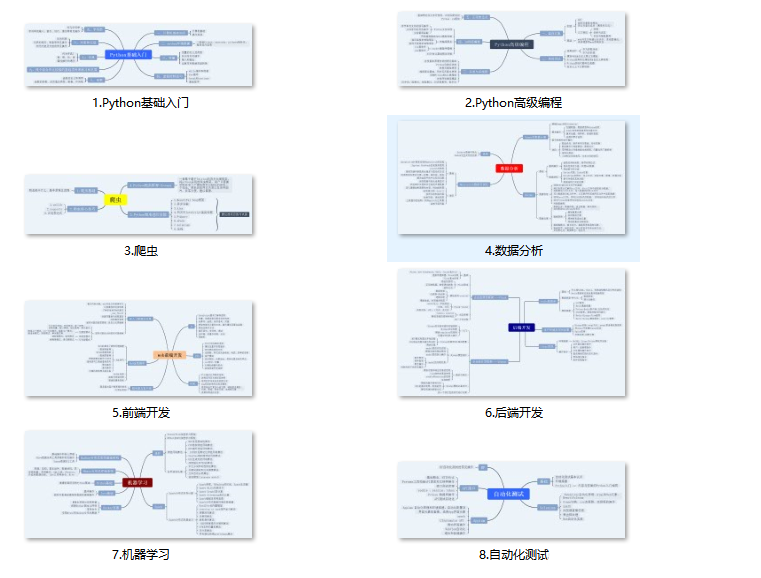sysbench 安装、使用和测试
转载地址:http://www.cnblogs.com/zhoujinyi/archive/2013/04/19/3029134.html摘要: sysbench是一个开源的、模块化的、跨平台的多线程性能测试工具,可以用来进行CPU、内存、磁盘I/O、线程、数据库的性能测试。目前支持的数据库有MySQL、Oracle和PostgreSQL。当前功能允许测试的系统参数有:
转载地址:http://www.cnblogs.com/zhoujinyi/archive/2013/04/19/3029134.html
摘要:
sysbench是一个开源的、模块化的、跨平台的多线程性能测试工具,可以用来进行CPU、内存、磁盘I/O、线程、数据库的性能测试。目前支持的数据库有MySQL、Oracle和PostgreSQL。当前功能允许测试的系统参数有:
file I/O performance (文件I / O性能)
scheduler performance (调度性能)
memory allocation and transfer speed (内存分配和传输速度)
POSIX threads implementation performance (POSIX线程执行绩效)
database server performance (OLTP benchmark) (数据库服务器性能)
安装:
1):Ubuntu系统可以直接apt,如:
apt-get install sysbench
2):其他系统的则可以编译安装[在/home/zhoujy/目录下]:(安装前先装automake,libtool)
wget http://nchc.dl.sourceforge.net/project/sysbench/sysbench/0.4.12/sysbench-0.4.12.tar.gz tar zxvf sysbench-0.4.12.tar.gz
进入解压目录,并且创建安装目录: root@m2:/home/zhoujy# cd sysbench-0.4.12/ root@m2:/home/zhoujy/sysbench-0.4.12# mkdir /usr/sysbench/
准备编译 root@m2:/home/zhoujy/sysbench-0.4.12# apt-get install automake root@m2:/home/zhoujy/sysbench-0.4.12#apt-get install libtool root@m2:/home/zhoujy/sysbench-0.4.12# ./autogen.sh
要是出现:perl: warning: Falling back to the standard locale ("C")。则需要设置locale:
echo "export LC_ALL=C" >> /root/.bashrc source /root/.bashrc
要是没有安装开发包,即/usr/include/ 目录下面没有mysql文件夹。则需要执行安装(版本为12.04):
sudo apt-get install libmysqlclient-dev sudo apt-get install libmysqld-dev sudo apt-get install libmysqld-pic
执行configure操作:
./configure --prefix=/usr/sysbench/ --with-mysql-includes=/usr/include/mysql/ --with-mysql-libs=/usr/lib/mysql/ --with-mysql
说明:
--prefix=/usr/sysbench/ :指定sysbench的安装目录。
--with-mysql-includes=/usr/include/mysql/ :指定安装mysql时候的includes目录。
--with-mysql-libs=/usr/lib/mysql/ :指定装mysql时候的lib目录。
--with-mysql :sysbench默认支持mysql,如果需要测试oracle或者pgsql则需要制定–with-oracle或者–with-pgsql。
在这里需要先执行:
cp /usr/bin/libtool /home/zhoujy/sysbench-0.4.12/libtool
再make和make install。否者会出现 libtool 报出的 Xsysbench: command not found 错误,则表示编译文件包的libtool版本太低,需要替换。
选项说明(通用):
root@db2:~# sysbench Missing required command argument. Usage: #使用方法 sysbench [general-options]... --test=<test-name> [test-options]... command General options: #通用选项 --num-threads=N number of threads to use [1] #创建测试线程的数目。默认为1. --max-requests=N limit for total number of requests [10000] #请求的最大数目。默认为10000,0代表不限制。 --max-time=N limit for total execution time in seconds [0] #最大执行时间,单位是s。默认是0,不限制。 --forced-shutdown=STRING amount of time to wait after --max-time before forcing shutdown [off] #超过max-time强制中断。默认是off。 --thread-stack-size=SIZE size of stack per thread [32K] #每个线程的堆栈大小。默认是32K。 --init-rng=[on|off] initialize random number generator [off] #在测试开始时是否初始化随机数发生器。默认是off。 --test=STRING test to run #指定测试项目名称。 --debug=[on|off] print more debugging info [off] #是否显示更多的调试信息。默认是off。 --validate=[on|off] perform validation checks where possible [off] #在可能情况下执行验证检查。默认是off。 --help=[on|off] print help and exit #帮助信息。 --version=[on|off] print version and exit #版本信息。 Compiled-in tests: #测试项目 fileio - File I/O test #IO cpu - CPU performance test #CPU memory - Memory functions speed test #内存 threads - Threads subsystem performance test #线程 mutex - Mutex performance test #互斥性能测试 oltp - OLTP test # 数据库,事务处理 Commands: prepare:测试前准备工作; run:正式测试 cleanup:测试后删掉测试数据 help version See 'sysbench --test=<name> help' for a list of options for each test. #查看每个测试项目的更多选项列表
更多选项:
1):sysbench --test=fileio help

root@db2:~# sysbench --test=fileio help
sysbench 0.4.12: multi-threaded system evaluation benchmark
fileio options:
--file-num=N 创建测试文件的数量。默认是128
--file-block-size=N 测试时文件块的大小。默认是16384(16K)
--file-total-size=SIZE 测试文件的总大小。默认是2G
--file-test-mode=STRING 文件测试模式{seqwr(顺序写), seqrewr(顺序读写), seqrd(顺序读), rndrd(随机读), rndwr(随机写), rndrw(随机读写)}
--file-io-mode=STRING 文件操作模式{sync(同步),async(异步),fastmmap(快速map映射),slowmmap(慢map映射)}。默认是sync
--file-extra-flags=STRING 使用额外的标志来打开文件{sync,dsync,direct} 。默认为空
--file-fsync-freq=N 执行fsync()的频率。(0 – 不使用fsync())。默认是100
--file-fsync-all=[on|off] 每执行完一次写操作就执行一次fsync。默认是off
--file-fsync-end=[on|off] 在测试结束时才执行fsync。默认是on
--file-fsync-mode=STRING 使用哪种方法进行同步{fsync, fdatasync}。默认是fsync
--file-merged-requests=N 如果可以,合并最多的IO请求数(0 – 表示不合并)。默认是0
--file-rw-ratio=N 测试时的读写比例。默认是1.5
2):sysbench --test=cpu help

--cpu-max-prime=N 最大质数发生器数量。默认是10000
3):sysbench --test=memory help

root@db2:~# sysbench --test=memory help
sysbench 0.4.12: multi-threaded system evaluation benchmark
memory options:
--memory-block-size=SIZE 测试时内存块大小。默认是1K
--memory-total-size=SIZE 传输数据的总大小。默认是100G
--memory-scope=STRING 内存访问范围{global,local}。默认是global
--memory-hugetlb=[on|off] 从HugeTLB池内存分配。默认是off
--memory-oper=STRING 内存操作类型。{read, write, none} 默认是write
--memory-access-mode=STRING存储器存取方式{seq,rnd} 默认是seq
4):sysbench --test=threads help

sysbench 0.4.12: multi-threaded system evaluation benchmark
threads options:
--thread-yields=N 每个请求产生多少个线程。默认是1000
--thread-locks=N 每个线程的锁的数量。默认是8
5):sysbench --test=mutex help

root@db2:~# sysbench --test=mutex help
sysbench 0.4.12: multi-threaded system evaluation benchmark
mutex options:
--mutex-num=N 数组互斥的总大小。默认是4096
--mutex-locks=N 每个线程互斥锁的数量。默认是50000
--mutex-loops=N 内部互斥锁的空循环数量。默认是10000
6): sysbench --test=oltp help
root@db2:~# sysbench --test=oltp help
sysbench 0.4.12: multi-threaded system evaluation benchmark
oltp options:
--oltp-test-mode=STRING 执行模式{simple,complex(advanced transactional),nontrx(non-transactional),sp}。默认是complex
--oltp-reconnect-mode=STRING 重新连接模式{session(不使用重新连接。每个线程断开只在测试结束),transaction(在每次事务结束后重新连接),query(在每个SQL语句执行完重新连接),random(对于每个事务随机选择以上重新连接模式)}。默认是session
--oltp-sp-name=STRING 存储过程的名称。默认为空
--oltp-read-only=[on|off] 只读模式。Update,delete,insert语句不可执行。默认是off
--oltp-skip-trx=[on|off] 省略begin/commit语句。默认是off
--oltp-range-size=N 查询范围。默认是100
--oltp-point-selects=N number of point selects [10]
--oltp-simple-ranges=N number of simple ranges [1]
--oltp-sum-ranges=N number of sum ranges [1]
--oltp-order-ranges=N number of ordered ranges [1]
--oltp-distinct-ranges=N number of distinct ranges [1]
--oltp-index-updates=N number of index update [1]
--oltp-non-index-updates=N number of non-index updates [1]
--oltp-nontrx-mode=STRING 查询类型对于非事务执行模式{select, update_key, update_nokey, insert, delete} [select]
--oltp-auto-inc=[on|off] AUTO_INCREMENT是否开启。默认是on
--oltp-connect-delay=N 在多少微秒后连接数据库。默认是10000
--oltp-user-delay-min=N 每个请求最短等待时间。单位是ms。默认是0
--oltp-user-delay-max=N 每个请求最长等待时间。单位是ms。默认是0
--oltp-table-name=STRING 测试时使用到的表名。默认是sbtest
--oltp-table-size=N 测试表的记录数。默认是10000
--oltp-dist-type=STRING 分布的随机数{uniform(均匀分布),Gaussian(高斯分布),special(空间分布)}。默认是special
--oltp-dist-iter=N 产生数的迭代次数。默认是12
--oltp-dist-pct=N 值的百分比被视为'special' (for special distribution)。默认是1
--oltp-dist-res=N ‘special’的百分比值。默认是75
General database options:
--db-driver=STRING 指定数据库驱动程序('help' to get list of available drivers)
--db-ps-mode=STRING编制报表使用模式{auto, disable} [auto]
Compiled-in database drivers:
mysql - MySQL driver
mysql options:
--mysql-host=[LIST,...] MySQL server host [localhost]
--mysql-port=N MySQL server port [3306]
--mysql-socket=STRING MySQL socket
--mysql-user=STRING MySQL user [sbtest]
--mysql-password=STRING MySQL password []
--mysql-db=STRING MySQL database name [sbtest]
--mysql-table-engine=STRING storage engine to use for the test table {myisam,innodb,bdb,heap,ndbcluster,federated} [innodb]
--mysql-engine-trx=STRING whether storage engine used is transactional or not {yes,no,auto} [auto]
--mysql-ssl=[on|off] use SSL connections, if available in the client library [off]
--myisam-max-rows=N max-rows parameter for MyISAM tables [1000000]
--mysql-create-options=STRING additional options passed to CREATE TABLE []
测试:
1)测试CPU: sysbench --test=cpu --cpu-max-prime=2000 run

root@db2:~# sysbench --test=cpu --cpu-max-prime=2000 run
sysbench 0.4.12: multi-threaded system evaluation benchmark
Running the test with following options:
Number of threads: 1
Doing CPU performance benchmark
Threads started!
Done.
Maximum prime number checked in CPU test: 2000
Test execution summary:
total time: 3.7155s
total number of events: 10000
total time taken by event execution: 3.7041
per-request statistics:
min: 0.36ms
avg: 0.37ms
max: 2.53ms
approx. 95 percentile: 0.37ms
Threads fairness:
events (avg/stddev): 10000.0000/0.00
execution time (avg/stddev): 3.7041/0.00
2)测试线程:sysbench --test=threads --num-threads=500 --thread-yields=100 --thread-locks=4 run

root@db2:~# sysbench --test=threads --num-threads=500 --thread-yields=100 --thread-locks=4 run
sysbench 0.4.12: multi-threaded system evaluation benchmark
Running the test with following options:
Number of threads: 500
Doing thread subsystem performance test
Thread yields per test: 100 Locks used: 4
Threads started!
Done.
Test execution summary:
total time: 1.0644s
total number of events: 10000
total time taken by event execution: 501.3952
per-request statistics:
min: 0.05ms
avg: 50.14ms
max: 587.05ms
approx. 95 percentile: 190.28ms
Threads fairness:
events (avg/stddev): 20.0000/4.72
execution time (avg/stddev): 1.0028/0.01
3)测试IO:--num-threads 开启的线程 --file-total-size 总的文件大小
1,prepare阶段,生成需要的测试文件,完成后会在当前目录下生成很多小文件。
sysbench --test=fileio --num-threads=16 --file-total-size=2G --file-test-mode=rndrw prepare
2,run阶段
sysbench --test=fileio --num-threads=20 --file-total-size=2G --file-test-mode=rndrw run
3,清理测试时生成的文件
sysbench --test=fileio --num-threads=20 --file-total-size=2G --file-test-mode=rndrw cleanup

root@db2:~/io# sysbench --test=fileio --num-threads=16 --file-total-size=2G --file-test-mode=rndrw prepare
sysbench 0.4.12: multi-threaded system evaluation benchmark
128 files, 16384Kb each, 2048Mb total
Creating files for the test...
root@db2:~/io# sysbench --test=fileio --num-threads=20 --file-total-size=2G --file-test-mode=rndrw run
sysbench 0.4.12: multi-threaded system evaluation benchmark
Running the test with following options:
Number of threads: 20
Extra file open flags: 0
128 files, 16Mb each
2Gb total file size
Block size 16Kb
Number of random requests for random IO: 10000
Read/Write ratio for combined random IO test: 1.50
Periodic FSYNC enabled, calling fsync() each 100 requests.
Calling fsync() at the end of test, Enabled.
Using synchronous I/O mode
Doing random r/w test
Threads started!
Done.
Operations performed: 6010 Read, 3997 Write, 12803 Other = 22810 Total
Read 93.906Mb Written 62.453Mb Total transferred 156.36Mb (6.6668Mb/sec)
426.68 Requests/sec executed
Test execution summary:
total time: 23.4534s
total number of events: 10007
total time taken by event execution: 111.5569
per-request statistics:
min: 0.01ms
avg: 11.15ms
max: 496.18ms
approx. 95 percentile: 53.05ms
Threads fairness:
events (avg/stddev): 500.3500/37.50
execution time (avg/stddev): 5.5778/0.21
root@db2:~/io# sysbench --test=fileio --num-threads=20 --file-total-size=2G --file-test-mode=rndrw cleanup
sysbench 0.4.12: multi-threaded system evaluation benchmark
Removing test files...
4)测试内存:sysbench --test=memory --memory-block-size=8k --memory-total-size=1G run

sysbench 0.4.12: multi-threaded system evaluation benchmark
Operations performed: 1310720 (396525.32 ops/sec)
10240.00 MB transferred (3097.85 MB/sec)
Test execution summary:
total time: 3.3055s
total number of events: 1310720
total time taken by event execution: 205.0560
per-request statistics:
min: 0.00ms
avg: 0.16ms
max: 1066.04ms
approx. 95 percentile: 0.02ms
Threads fairness:
events (avg/stddev): 13107.2000/3870.38
execution time (avg/stddev): 2.0506/0.28
5)测试mutex:sysbench –test=mutex –num-threads=100 –mutex-num=1000 –mutex-locks=100000 –mutex-loops=10000 run

Test execution summary:
total time: 12.5606s
total number of events: 100
total time taken by event execution: 1164.4236
per-request statistics:
min: 9551.87ms
avg: 11644.24ms
max: 12525.32ms
approx. 95 percentile: 12326.25ms
Threads fairness:
events (avg/stddev): 1.0000/0.00
execution time (avg/stddev): 11.6442/0.59
6)测试OLTP:
1,prepare阶段,生成需要的测试表
sysbench --test=oltp --mysql-table-engine=innodb --mysql-host=192.168.X.X --mysql-db=test --oltp-table-size=500000 --mysql-user=root --mysql-password=123456 prepare
2,run阶段
sysbench --num-threads=16 --test=oltp --mysql-table-engine=innodb --mysql-host=192.168.x.x --mysql-db=test --oltp-table-size=500000 --mysql-user=root --mysql-password=123456 run
3,清理测试时生成的测试表
sysbench --num-threads=16 --test=oltp --mysql-table-engine=innodb --mysql-host=192.168.x.x --mysql-db=test --oltp-table-size=500000 --mysql-user=root --mysql-password=123456 cleanup
root@db2:~# sysbench --test=oltp --mysql-table-engine=innodb --mysql-host=192.168.x.x --mysql-db=rep_test --oltp-table-size=1000000 --mysql-user=root --mysql-password=123456 prepare
sysbench 0.4.12: multi-threaded system evaluation benchmark
No DB drivers specified, using mysql
Creating table 'sbtest'...
Creating 1000000 records in table 'sbtest'...
root@db2:~# sysbench --num-threads=16 --test=oltp --mysql-table-engine=innodb --mysql-host=192.168.x.x --mysql-db=rep_test --oltp-table-size=1000000 --mysql-user=root --mysql-password=123456 run
sysbench 0.4.12: multi-threaded system evaluation benchmark
No DB drivers specified, using mysql
Running the test with following options:
Number of threads: 16
Doing OLTP test.
Running mixed OLTP test
Using Special distribution (12 iterations, 1 pct of values are returned in 75 pct cases)
Using "BEGIN" for starting transactions
Using auto_inc on the id column
Maximum number of requests for OLTP test is limited to 10000
Threads started!
Done.
OLTP test statistics:
queries performed:
read: 140000
write: 50000
other: 20000
total: 210000
#—-事务数总计,每秒的事务处理量
transactions: 10000 (356.98 per sec.)
deadlocks: 0 (0.00 per sec.)
read/write requests: 190000 (6782.56 per sec.)
other operations: 20000 (713.95 per sec.)
Test execution summary:
total time: 28.0130s
total number of events: 10000
total time taken by event execution: 447.7731
per-request statistics:
min: 3.91ms
avg: 44.78ms
max: 207.61ms
approx. 95 percentile: 76.48ms
Threads fairness:
events (avg/stddev): 625.0000/22.96
execution time (avg/stddev): 27.9858/0.01
root@db2:~# sysbench --num-threads=16 --test=oltp --mysql-table-engine=innodb --mysql-host=192.168.x.x --mysql-db=rep_test --oltp-table-size=1000000 --mysql-user=root --mysql-password=123456 cleanup
sysbench 0.4.12: multi-threaded system evaluation benchmark
No DB drivers specified, using mysql
Dropping table 'sbtest'...
Done.
测试表信息:
mysql> desc sbtest; +-------+------------------+------+-----+---------+----------------+ | Field | Type | Null | Key | Default | Extra | +-------+------------------+------+-----+---------+----------------+ | id | int(10) unsigned | NO | PRI | NULL | auto_increment | | k | int(10) unsigned | NO | MUL | 0 | | | c | char(120) | NO | | | | | pad | char(60) | NO | | | | +-------+------------------+------+-----+---------+----------------+ 4 rows in set (0.01 sec) mysql> show create table sbtest\G; *************************** 1. row *************************** Table: sbtest Create Table: CREATE TABLE `sbtest` ( `id` int(10) unsigned NOT NULL AUTO_INCREMENT, `k` int(10) unsigned NOT NULL DEFAULT '0', `c` char(120) NOT NULL DEFAULT '', `pad` char(60) NOT NULL DEFAULT '', PRIMARY KEY (`id`), KEY `k` (`k`) ) ENGINE=InnoDB AUTO_INCREMENT=1000001 DEFAULT CHARSET=utf8 1 row in set (0.01 sec) ERROR: No query specified mysql> select count(*) from sbtest; +----------+ | count(*) | +----------+ | 1000000 | +----------+ 1 row in set (0.30 sec) mysql> desc sbtest; ERROR 1146 (42S02): Table 'rep_test.sbtest' doesn't exist
可以用这个测试:
sysbench --num-threads=4 --test=oltp --oltp-reconnect-mode=random --mysql-table-engine=innodb --mysql-host=192.168.200.201 --mysql-db=rep_test --ol tp-table-size=500000 --mysql-user=zjy --mysql-password=1234#
其他:
http://hidba.org/?p=229
http://hi.baidu.com/ancen_ye/item/4b1f33f2d366135fc8f33712
更多推荐
 已为社区贡献1条内容
已为社区贡献1条内容










所有评论(0)